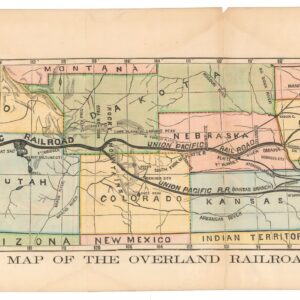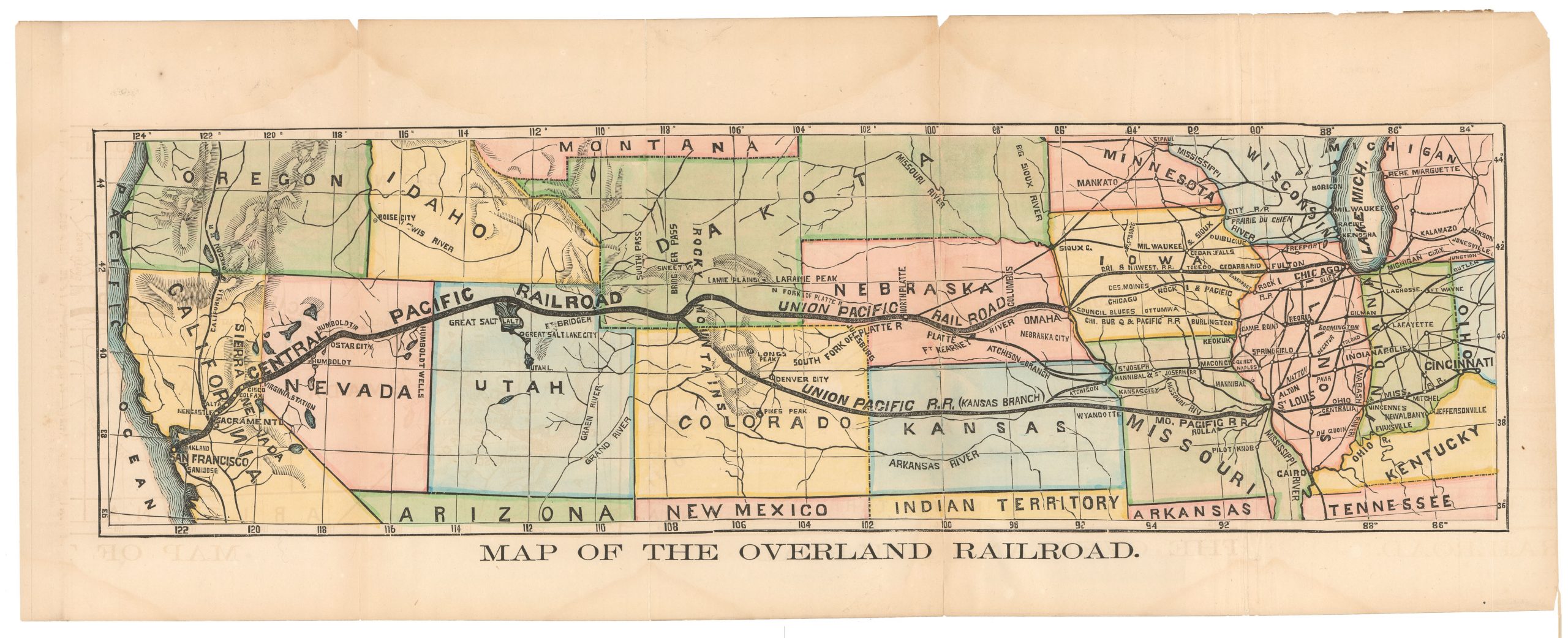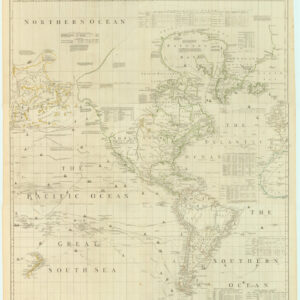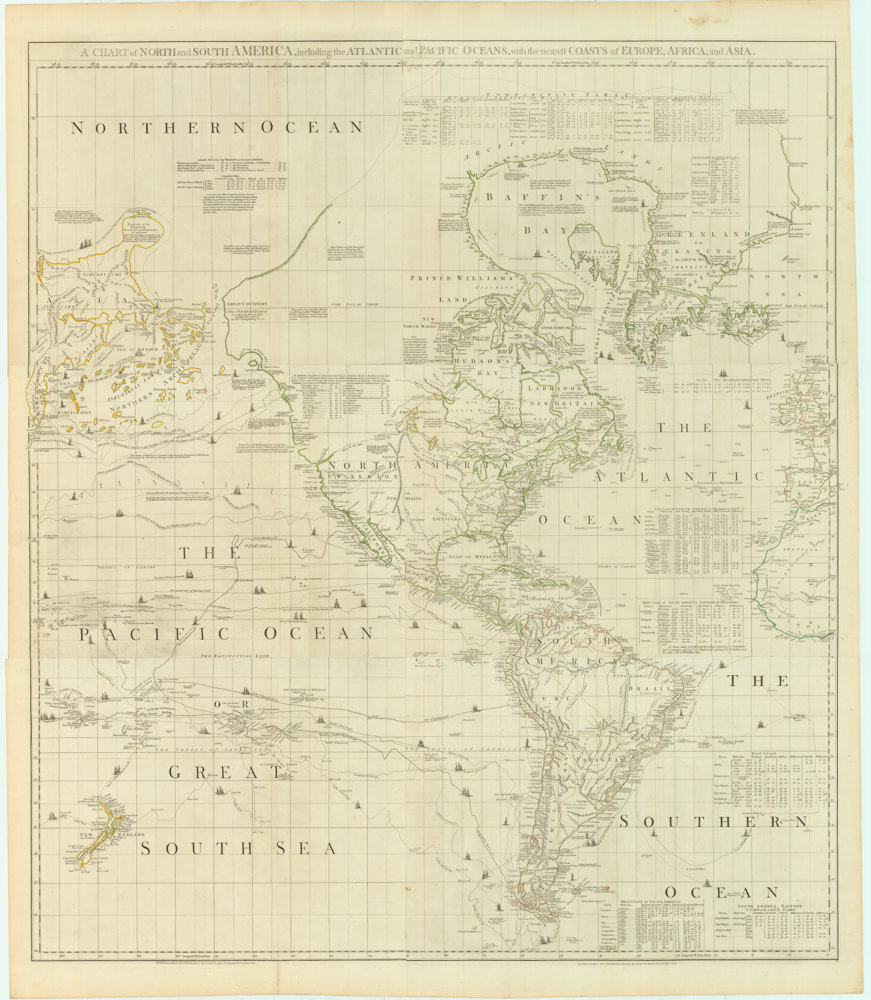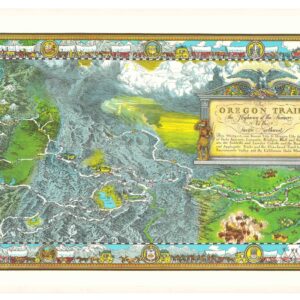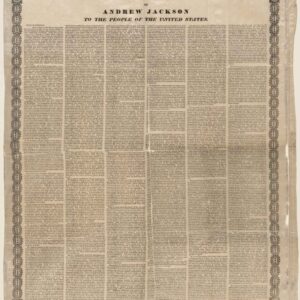A First State of Colton’s Map of the United States with Texas extending into Colorado.
Map of the United States of America, The British Provinces, Mexico, The West Indies and Central America, with part of New Granada and Venezuela.
$8,500
1 in stock
Description
This map is among the earliest printed maps to reference the California Gold Rush, issued just months after the 1848 discovery of gold and shortly after the Treaty of Guadalupe Hidalgo, which ended the Mexican-American War and transferred a vast swath of territory from Mexico to the United States.
It offers a snapshot of the United States at a pivotal moment, featuring newly annexed western lands, an oversized Texas (shown at its maximum claimed extent), and a fascinating depiction of the West before the creation of the Utah, New Mexico, Washington, and Kansas Territories.
Texas at Its Maximum Claimed Extent
- Texas is depicted with its boldest territorial claims, reflecting the boundaries asserted during its years as an independent republic and carried into early U.S. statehood (1845–1849).
- Northern “stovepipe” panhandle stretches far into present-day Wyoming and Colorado, an area Texas claimed based on historical Spanish and Mexican precedent.
- The western boundary extends to the Rio Grande, including parts of modern-day New Mexico—territory that has been hotly contested between Texas and the federal government.
- These expansive claims were largely rolled back in the Compromise of 1850, when Texas ceded land to the U.S. in exchange for debt relief.
The Western United States: Undefined & Expansive
- California appears as a single vast entity—still undefined as a state (it would join the Union in 1850), but newly American after the Mexican War. The “Gold Region” is labeled near the Sacramento River, though modestly.
- Oregon Territory stretches from the Pacific to the Continental Divide, including all of present-day Oregon, Washington, Idaho, and parts of Montana and Wyoming.
- Nebraska Territory occupies a huge central swath, encompassing the Great Plains but with minimal internal detail. It predates its 1854 formal organization.
- No sign yet of Utah or New Mexico Territories, which would be organized in 1850.
- Native American lands and major overland routes (like the Oregon Trail) are marked, but the interior West is largely unmapped, described only in vague geographic strokes.
Other Notable Boundary Details
- Florida is a state (admitted 1845), but much of the Southeast is still recovering from earlier Native displacement and territorial reorganization.
- The Mississippi River still functions as a crucial east–west boundary between developed states and the expanding frontier.
- Great Basin and interior California remain largely uncharted—there is no depiction of the Sierra Nevada range or detailed hydrography beyond a few major rivers.
Summary
Colton’s 1849 map presents a liminal geographic vision: the United States in the immediate aftermath of war, on the edge of gold fever, and before Congress imposed structure on the new western lands. It captures:
- Texas at its most ambitious—a vision quickly curtailed.
- A California that is American but not yet a state, already drawing attention for its gold.
- A vast western void soon to be filled by settlers, railroads, and legal boundaries.
As a historical artifact, this map offers a pre-legislative snapshot of U.S. expansion—what the country looked like before federal compromises, surveys, and sectional battles remapped it.
Cartographer(s):
The Colton Mapmaking Company was a prominent family firm of cartographic printers, who in the nineteenth century were leaders in the American map trade. Its founder, Joseph Hutchins Colton (1800-1893), was a Massachusetts native who in 1830 moved to New York City and slowly began setting up his publishing business, which in the beginning drew heavily on licensing maps by established engravers such as David H. Burr, Samuel Stiles & Company, and later Stiles, Sherman & Smith. Smith was a charter member of the American Geographical and Statistical Society, as was John Disturnell. This connection would later benefit Colton, in that it helped him to acquire the rights to several important maps.
By the 1840s, the Colton firm were producing their own maps. They produced anything the markets desired, from massive and impressive wall-maps to pockets guides, folding maps, immigrant guides, and atlases. One of the things that set the Colton company aside from many of its contemporaries in terms of quality, was the insistence that only steel plate engravings be used for Colton maps. These created much more well-defined print lines, allowing even minute features and labels to stand out clearly. By 1850, the Colton firm was one of the primary publishers of guidebooks, immigration itineraries, and railroad maps in America.
In the 1850s, Colton’s two sons, George Woolworth and Charles B., were brought on board to the firm. This inaugurated a process of expansion in which the company began taking international commissions and producing wholly independent maps and charts. From 1850 to the early 1890s, they also published several school atlases and pocket maps. The firm continued until the late 1890s, when it merged with a competitor and then ceased to trade under the name Colton.
Condition Description
Segmented and laid on linen, as issued.
References
Rumsey 286, Streeter 3873 and 3874, Wheat, Maps (74).
